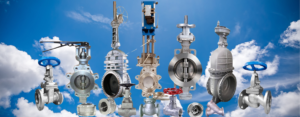
There is no doubt that maintenance is essential to the industry. Unfortunately, many people ignore this task or take it lightly, but it is to be noted that to increase the life of a system, it is essential to maintain it properly.
It is crucial to maintain your system because if you don’t, the chances of failure increase. If you neglect maintenance and leave your system unattended, it will be harder for you to keep up with the work.
When you neglect your system and leave it unattended, you are putting yourself at risk of having an accident or making mistakes that could cost you money or damage other systems around you.
The Maintenance works in two types – preventive and predictive. Preventive Maintenance effectively ensures that a system does not break down, while predictive Maintenance helps predict when it will break down.
Preventive Maintenance
Preventive Maintenance is a planned, scheduled procedure to prevent any issues from occurring in the future. It’s like a car’s oil change, but for your machine!
Suppose you have five components in a plant and know that out of those five, three components will require periodic check-ups and overviews to run correctly. So, it will be necessary to periodically maintain and check these three components so that it runs for longer life.
Compare it with your vehicle servicing—you know that engine oil must be changed periodically to ensure the vehicle’s longest running and smooth operation. Preventive maintenance is what this is called. Preventive Maintenance is a type of maintenance performed to ensure that equipment does not fail. It involves performing routine checks on equipment to ensure it works properly and will not fail.
Preventive Maintenance is extremely useful in reducing the machine’s operating costs, as you have all the tools prepared to maintain the parts that will frequently wear and tear. However, it would be best if you had a proper idea of the system components and it’s working to identify which will require periodic checks.
To conduct Preventive Maintenance, there are specific procedures and tools required. Prerequisite checklists like calibration data, equipment inspection, cleaning, component inspection, repair, and replacement will be needed to execute the tasks at hand properly. In some cases, Preventive Maintenance may be based on a running number.
Predictive Maintenance
As its name suggests, predictive maintenance refers to the prediction of breakdowns. It involves guessing the probability of equipment failure through monitoring and testing.
This activity is done way before a breakdown occurs by predicting the components that will undergo wear and tear in the future. The user will then prepare himself by arranging the necessary tools to attend to it and resume the machine operation immediately.
Consider a health example. A doctor knows that a so-called patient is continuously smoking, and his condition of lungs he will deteriorate shortly to a stage where his life is in danger. But it can’t tell the exact date, like in preventive maintenance, where we know the date. Then he will ask the patient to prepare the corresponding medications and the hospital where he should be admitted. This will prepare the patient mentally to deal with the situation.
This type only works on monitoring, analysis, and administration. A good set of sensors are needed to monitor the machine and identify these components, which will be analyzed in the coming days by reading its data, graphs, and reports. It is a real-time, data-driven approach to machine maintenance.
So, its primary goal is to catch the potential asset malfunction as early as possible to avoid further damage. The sensors will communicate data with the maintenance software to allow it to analyze the machine and determine which components will require maintenance in the future.
Predictive Maintenance versus Preventive Maintenance
- As opposed to predictive, which is not routinely performed, preventive is done regularly.
- When it comes to preventive maintenance, downtime is more critical than when it comes to predictive maintenance. Rest is rarely required in predictive maintenance. Replacements or repairs can be made to assets to restore them to working order.
- The prevention approach is less complex and cheaper than the predictive approach, which requires more understanding, design, and preparation. The cost of preventive maintenance is higher.
- Asset failure can be prevented regardless of the asset’s state. Regardless of whether the investment is perfect, it will be handled according to schedule. In this case, however, the prediction is based on the asset failing.
- A preventative maintenance program takes longer to run than a predictive maintenance program.
- Preventive and predictive maintenance can be successful if done correctly. It is essential from the perspective of cost reduction, but it is not without risk. Risks can, however, be minimized when proper precautions are taken. Prevention and predictive maintenance must be carefully planned and carried out by motivated and well-trained workers in order to minimize risk.






